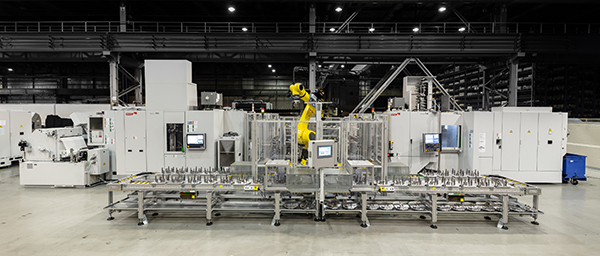
A fully automatic production cell based around two Heckert five-axis horizontal T45 machining centres from Starrag with integrated robot handling is manufacturing process-intensive planetary gear carriers in half the time taken by conventional methods, while also reducing tool expenditure by around 25% and halving traditional equipment costs.
The capabilities of the T45 machining centres combine effectively with robotised pallet, gripper and tool handling, as well as seamless cell control technology, to ensure Germany-based mechanical engineering and automation specialist Voith increases productivity by producing the carriers in the shortest possible lead times and with high levels of precision and process reliability.
Assuming an annual output of 50,000 parts per year, the system is also enabling productivity per unit area to be increased by up to two and a half times thanks to a reduction in the number of machines being used compared with traditional methods.
From a process perspective, once the component is clamped, an optimally co-ordinated sequence of rough and smooth milling, turning and drilling operations are undertaken by machines with 15,000 rpm, 292 Nm spindles, complemented by fast start-up and deceleration rates, and 60-tool magazines. The extremely short process and throughput times for sequentially machining workpieces that may be of variable design are partly due to the robot‘s ability to automatically set up the required grippers and type-specific pallets in the storage area while the machines are cutting. When the operator approves a new series for production, the robot changes all equipment within eight seconds. This innovative production solution halves the previous process time.
Overall throughput time is also reduced because there is no need to change workpieces between machines – thus, for example eliminating the installation of different clamping devices and re-clamping.
For further information
www.starrag.com























